What is it about fleece liners that make all the guinea pigs go crazy? Fleece liners are one of the healthiest types of guinea pig bedding options available. Guinea pig liners are not only the healthiest, but also the most convenient bedding to use. The first step is choosing the proper liner for your piggies. So, let me break down the facts for you in my new complete guide on fleece liners for guinea pigs below!
WHAT ARE FLEECE LINERS FOR GUINEA PIGS?

You may be wondering, are fleece liners good for guinea pigs? Compared to traditional beddings (guinea pig wood shavings and guinea pig paper bedding), the fleece liners provide a warm and healthier environment for the guinea pigs.
The fleece liners are a lot more convenient to place inside C&C cages than other types of bedding. Fleece liners for guinea pigs consist of fleece fabric designed to allow liquids to pass through. Many people prefer fleece liners because they are warm and comfortable for your piggy.
WHY FLEECE LINERS?
Other guinea pig bedding may consist of different types of paper bedding and wood shavings. These types of bedding can be unhealthy for your guinea pig’s respiratory system and cause bacterial infection. The fleece liners are also made of fabric, so they don’t create a mess or form dust, unlike other forms of bedding. The fleece liners also create a more spacious, comfortable, and cleaner environment for guinea pigs.
Another great thing about fleece liners for guinea pigs is the fact that they are machine washable, and you’re able to spot clean in order to reduce the amount of mess that is created, whether it’s stray pieces of hay or your guinea pigs’ poops. Because they’re washable, you’ll be spending less time cleaning as well. Generally, a fleece liner is better than regular bedding for guinea pigs.
However, not all fleece bedding will carry out the most important responsibility of keeping your guinea pig healthy. That’s where GuineaDad Liners come in.
THREE TYPES OF FLEECE LINERS
- GuineaDad Liners
GuineaDad fleece liners visually stand out because of the signature pocket. The pocket is thoughtfully designed to encourage the guinea pigs' instinct to hide. This minimizes stress for the guinea pigs to stay comfortable and healthy. It’s important that we make sure our guinea pigs feel as safe as possible in their own home.

But that's not all. GuineaDad's high quality fleece is the softest and has the fastest liquid pass-through rate. The closely knitted pattern amplifies the liquid transfer rate to the highly absorbent layer, while waterproof layer contains the liquid in place, keeping the guinea pigs' feet dry.
The absorbent layer, which is made with proprietary bamboo blend, minimizes the chance of guinea pigs acquiring bacterial infection (most common cause of guinea pig's death) through controlling bacteria growth and odor. A common question we often get is how often do you change guinea pig fleece liners? When it comes to the GuineaDad Liners, you only have to wash once a week!
We’ve even got our new GuineaDad Premium Liner, which is an upgraded version of the GuineaDad Liner! We are always trying to improve our liners in any way that we possibly can, and our GuineaDad Premium Liner is the result of that. Our GuineaDad Liner is still one of the best options on the market alongside our newer version!
The GuineaDad fleece cage liner is created by a team of guinea pig lovers and experts that have the best interest in guinea pigs' health and happiness.
- Waterproof Liners
Many waterproof liners are made with low quality material that may have multiple layers, including a waterproof bottom. They are typically made for beginner owners who are looking for convenience. However, these liners often disregard guinea pig's health.
- Generic Liners (padded liners)
Generic liners are sometimes called "padded liners" and are made with a fleece layer, a thin layer of padding, and another fleece layer on the bottom. Although flipping the fleece liner to either side can be efficient for you, it is problematic and unhealthy for guinea pigs.
This type of guinea pig fleece bedding can be flipped after usage, which means urine and defecation is exposed to the bottom of your cage. This type of fleece liner for guinea pigs also lacks absorbency properties where bacteria can often build and create an unhealthy habitat for your guinea pigs.
Not only is your liner going to be rampant with bacterial growth, but the bottom of your cage will be as well, and you’ll need to do full, thorough disinfection cleanings each time you launder the liner.
Like many waterproof liners, they lack consideration for
guinea pigs' health and happiness.

WHAT ARE THE QUALITIES OF A GOOD FLEECE LINER FOR GUINEA PIGS
There are many qualities to consider when looking for a great fleece liner for your guinea pigs, but they all boil down to one thing: Keeping our guinea pigs as healthy as possible.
The first important element to consider is absorbency of the inner material. Absorbency is important because it prevents your guinea pig from walking on soiled material, therefore keeping your piggy’s foot dry and clean. This layer must be specifically designed for guinea pigs.

It is also important for the liner to have a closely knitted fleece and absorbent layer. Some cage liners will have one or two knitting around the perimeter, but that is not enough. It is extremely important for every inch of the fleece to touch the absorbent layer to effectively keep the top layer dry. Otherwise, you can expose your guinea pig to bumblefoot and more often, bacterial infection.
Another important thing to consider is what it takes to maintain your fleece liner. Many people turn away from fleece bedding because it is made of fabric instead of something disposable and replaceable. However, fleece liners, like GuineaDad’s, are incredibly easy to clean, wash, and reuse which make them worth investing in the long run.
The last important factor to consider when looking for a guinea pig fleece liner is making sure that it is waterproof. Having fleece on both sides does not effectively contain urine and makes it so the liner never fully dries. This not only makes the clean up more difficult, but exposes your guinea pig to bacterial growth from an unexpected place. GuineaDad Liners effectively contain urine in an antibacterial bamboo blend layer to ensure the most sanitary environment for guinea pigs.

HOW TO USE FLEECE LINER FOR GUINEA PIGS
When seeking for a fleece liner for your guinea pig, make sure you find a liner that may appropriately fit the size of your cage. Simply lay the fleece liner gently at the bottom of your cage. If the fleece liner is too small for your cage, your guinea pigs may try to burrow underneath or urinate/defecate underneath the fleece liner. Guinea pig cage bedding such as GuineaDad Liners have various sizes designed to fit guinea pig cages. Using the appropriate size of fleece liner may decrease this situation from occurring.
Fleece liners are completely different from other types of bedding. As a result, you may want to take note of a few necessary routines that consist of cleaning your fleece liners. These tips will keep your piggie’s bedding in tip top shape!
How to Wash Fleece Liners
- The two things you need to note before washing your liners are unscented detergent and distilled white vinegar. Always make sure you use unscented detergent before you wash your fleece liners because guinea pigs have really sensitive respiratory systems. Any kind of strong, unnatural scents can cause allergic reactions in your guinea pig, such as sneezing.
- Make sure you use the guide in the back of the product that recommends how much detergent you should apply to your fleece liner. Due to avoiding any kind scent when laundering your fleece liner, the distilled white vinegar is used as a substitute for fabric softener. You may pour ¼ to ½ of the distilled white vinegar in the section where fabric softener is usually poured. This substitute keeps the fabric soft and plushy for your guinea pigs
- Before starting the washing cycle, make sure your washing machine is set to either: bedding, heavy duty, pre-soak, or extra rinse setting(s). These settings are important because fleece liners may have absorbent qualities, so it is important that enough water is used to penetrate the fabric thoroughly and therefore wash effectively. We don’t want to leave any detergent or urine behind.
- Set your water temperature to cold before starting the cycle to avoid shrinkage within the fleece liner. However, with GuineaDad Liners you may adjust the settings at warm to cold temperatures.
(Pro Tip: If you use GuineaDad Liners, we also recommend flipping the pocket inside out. We do this because GuineaDad Liners have a pocket for guinea pigs to use to feel safe, so this is where guinea pigs do most of their business. We also suggest folding the liner in half (long ways) so that the waterproof backing is on the inside before placing it in the washer. This is done so the water, detergent, and vinegar can actually reach the fabric of the liner and clean it. If the waterproof side is facing outwards, then the liner won’t be washed properly and will still have remnants of either detergent, urine, or both.)
- When starting the drying process, make sure you avoid using any additional laundry products. For fleece cage liners, it is recommended to not use dryer sheets. GuineaDad fleece liners are extremely absorbent, and fleece bedding that consist of absorbent properties can be affected by dryer sheets that clog the liner and affect the wicking process .
- When drying your fleece liner, make sure that you don’t overly dry it. Too much heat to any fleece liner can damage it and cause it to shrink, and can even affect the absorbency of the liner. We recommend drying the liners in low heat or even no heat for one cycle only. If you find the liner is still damp, air dry the liner by hanging it somewhere away from the sun or any excess heat. Draping it over a chair works well.
How to Spot Clean Guinea Pig Fleece Cage Liners
- Broom and Dust Pan: One of the easiest ways to spot clean is to grab a small broom and dust pan, and sweep in all the guinea pig feces. Afterwards, empty out the feces into the trash can.
- Shaking Into a Trash Can: This method is self-explanatory, but still fast and efficient. Carefully grab your soiled fleece liner, open the trash can, and empty all the feces into the trash.
- Vacuum: You may use any hand held vacuum to clean up feces, hay, or hair off the liner. This spot cleaning method is one of my favorites, as it is fast and easy to do on your own. Try to make sure that the vacuum that you choose to use is relatively quiet, as loud noises can scare your guinea pig, and could even stress them out.
How Often Do You Change Fleece Liners?
When maintaining your fleece liner, it is usually best to spot clean at least once a day, while washing them once a week. With GuineaDad customers we always suggest having more than one liner to switch one out on laundry day!
HOW LONG DO FLEECE LINERS FOR GUINEA PIGS LAST?
Fleece liners for guinea pigs can usually last for about a year or more depending on how well you take care of them. Based on our experience and many GuineaDad customers, our GuineaDad fleece liner can last for well over a year if well maintained. For the actual stress testing of the GuineaDad Liners product we tested the liner up to 30 washes, but stopped the test because we simply did not see any visible degradation.
Please be advised that the correct maintenance is the key—the more you stay away from heat, the better for the liner. So please do not over dry the liner or expose them to sun and any other heat source during the drying process. Some qualities that go into long lasting fleece liners are keeping your washing machine clean, air drying your fleece liners, and not changing your liners too frequently. Taking great care of your cage bedding will save you money and will become extremely beneficial for your guinea pigs in the long run.
FAQ

Are fleece liners good for guinea pigs?
Yes, fleece liners are in fact more beneficial than other types of bedding. GuineaDad fleece liners to be specific, are made with a pocket for guinea pigs to feel safe in. They are also hand made with anti-bacterial properties and waterproof backing to produce the best combination of materials that contribute to a healthy and happy guinea pig lifestyle.
Are cage liners safe for guinea pigs?
Cage liners, or fleece liners are indeed safe for guinea pigs. Not only are they hygienically safer than other types of bedding for guinea pigs, but they are also comfortable as well. They are, in fact, so comfortable for guinea pigs to play on, that you can use them outside of their cage for floor time and other activities.
What custom sizes are available for GuineaDad Liners?
We have five different sizes of GuineaDad Liner based on common sizes of C&C Cages:
-Midwest: Designed for a Midwest Guinea Habitat, which is ~24"x47" (61x120cm)
-2x4: Designed for a 2x4 C&C, which is ~27"x56" (69x142cm)
-2x3: Designed for a 2x3 C&C, which is ~27"x41" (69x104cm)
-2x2: Designed for a 2x2 C&C, which is ~27"x27" (69x69cm)
-2x1: Designed for a 2x1 C&C, which is ~27"x14" (69x36cm)
How are the GuineaDad Premium Liners different from the GuineaDad Liner?
Every year since we’ve released the GuineaDad Liners, we’ve made it our mission to constantly improve upon our liners, and we created an even better version in the process. The GuineaDad Premium Liner has an improved waterproof bottom, as well as even better absorbency.
We utilized AirCell™ Technology, which is a pocket of air between the fleece layer and the absorbent layer. This ensures that the absorbent layer dries even faster, and even provides more cushion for your guinea pig’s delicate feet. Because the liner dries quickly, that means that it takes less time for the fleece liner to dry during the laundering process.
How often should I clean my fleece liner?
You should spot clean your liners at least 1-2 times a day and wash them at least once a week.
How do I keep my guinea pig fleece liner from smelling?
Habitually spot clean your fleece liner, and when it’s time to wash it, add ¼ to ½ cups of white distilled vinegar as a substitute for fabric softener.
It is also recommended to perform deep cleaning once every couple months (i.e. every 3 months). We have a couple posts on how to deep clean your fleece guinea pig liner, as well as how to troubleshoot any kinds of problems you might run into.
SHOP OUR FLEECE LINERS
Read our other guinea pig care guides:
How GuineaDad Liners can save you $400 a year!
How to Keep Your Guinea Pig Cage Smelling Clean
GuineaDad Guide: Cleaning Guinea Pig Fleece Fabric Bed Lining
GuineaDad Guide: How to Wash Your Guinea Pig Fleece Liner, Spot Cleaning to Laundry!
Fleece Liners for Guinea Pig Cage: Reasons to Make the Switch From Paper Bedding!
Prevent Bacterial Infections, Choose the Best Bedding for Guinea Pigs
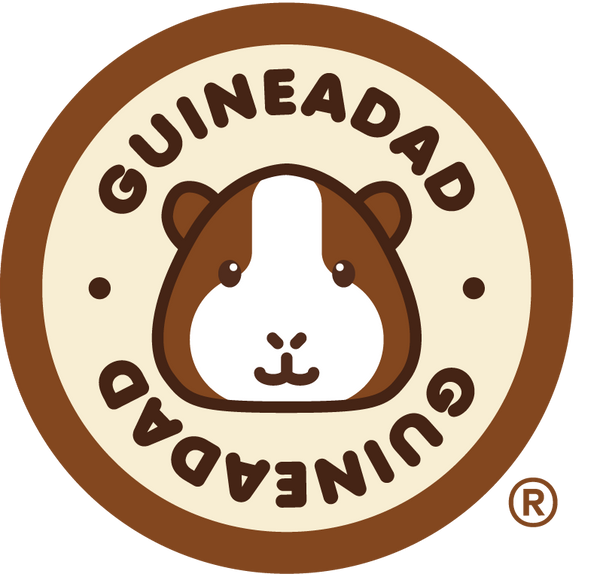
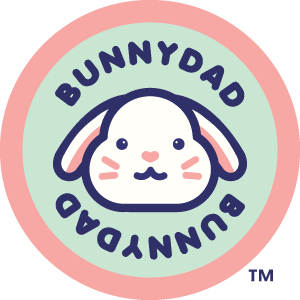
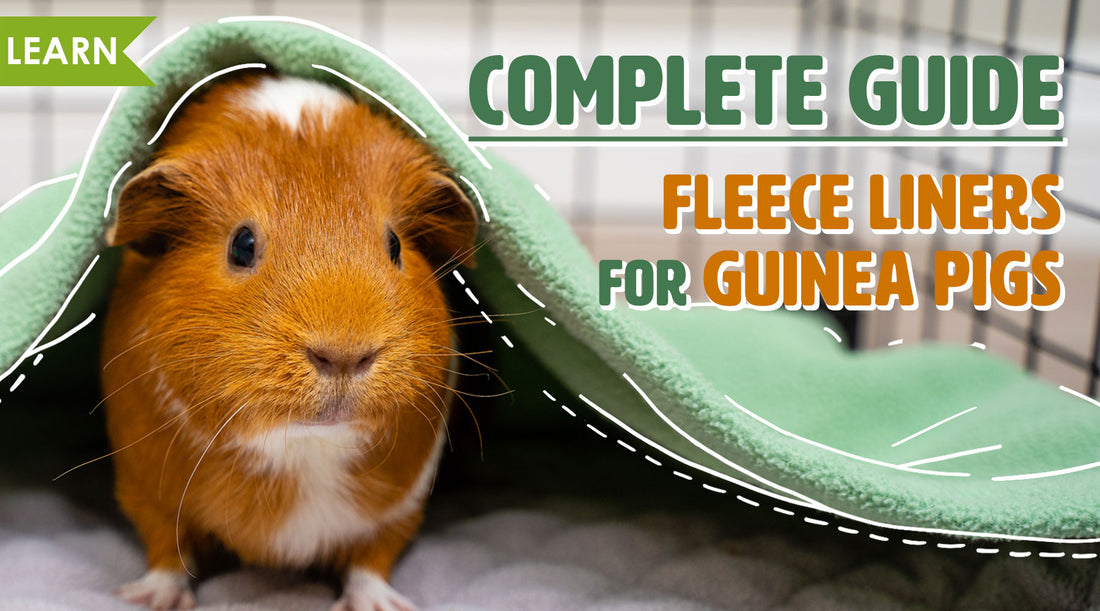



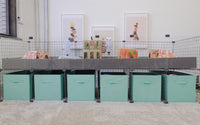

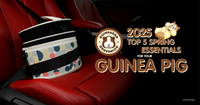
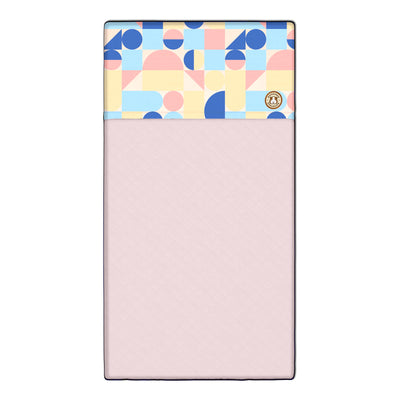
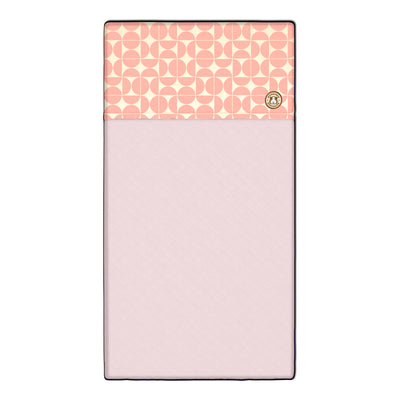
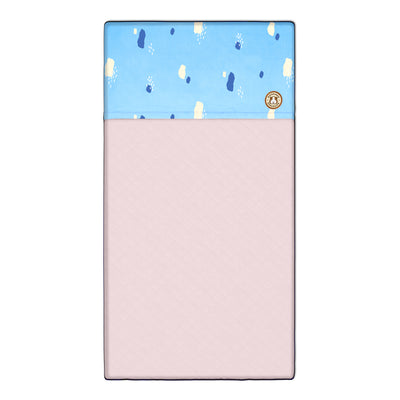
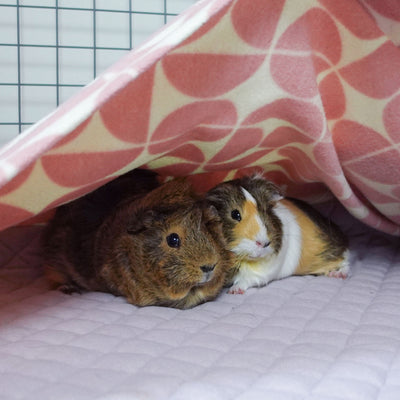
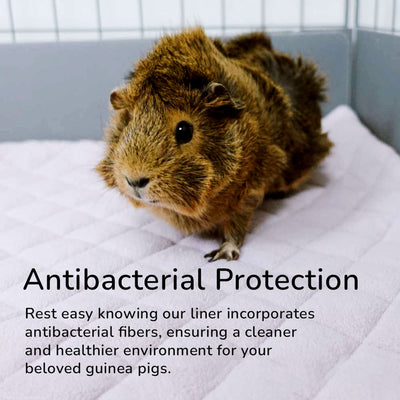
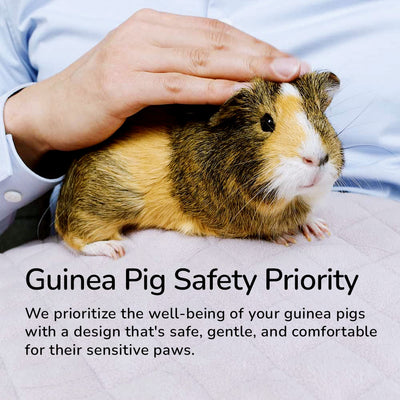
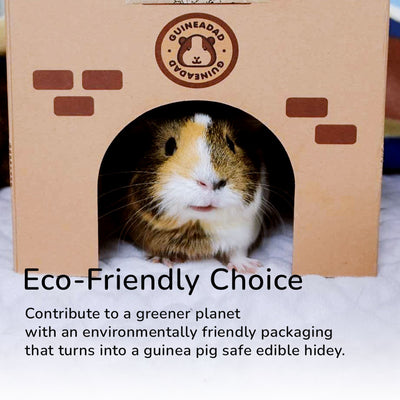
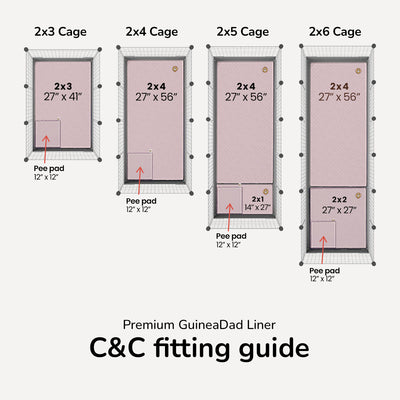
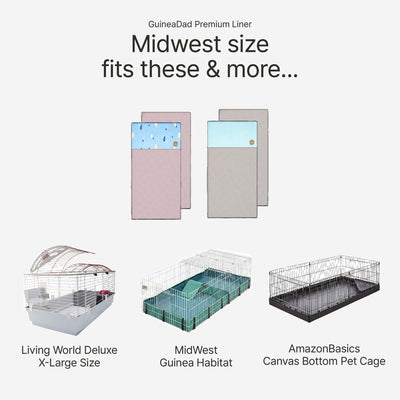
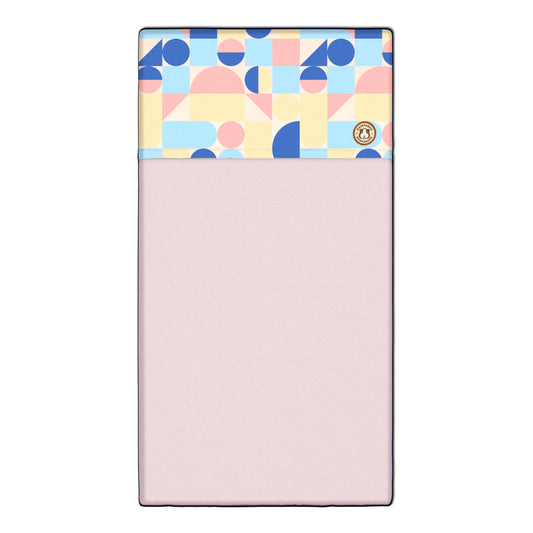



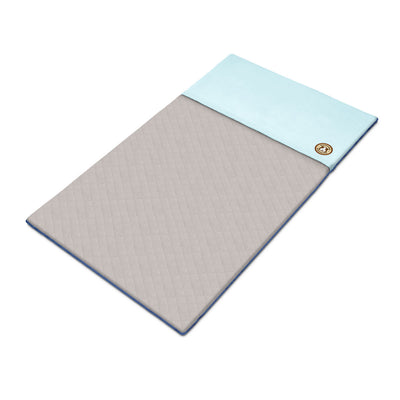
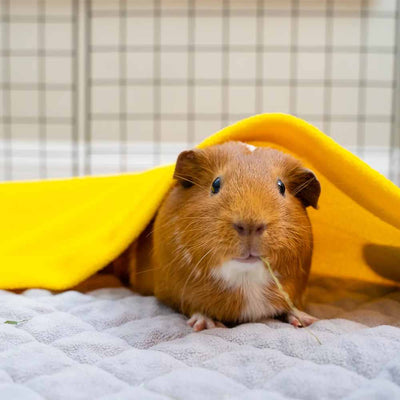
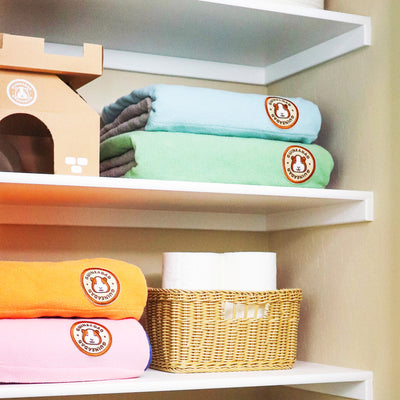
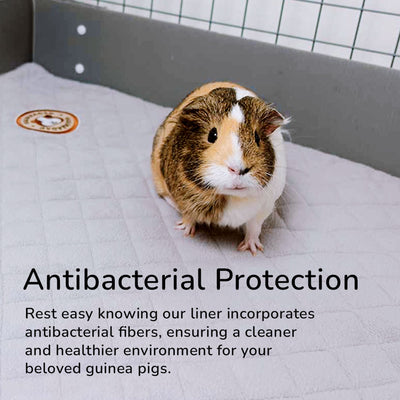
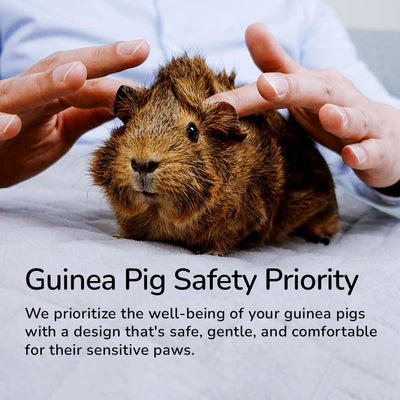
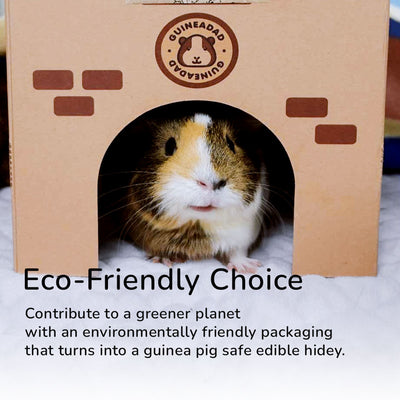
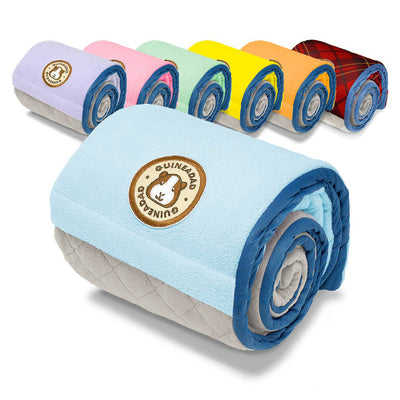
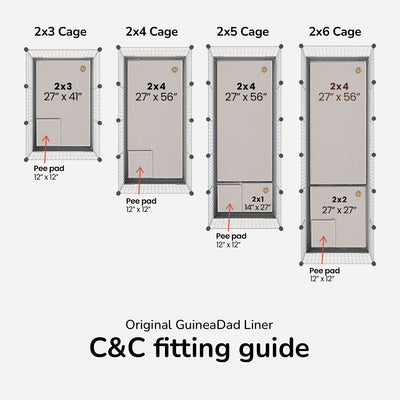
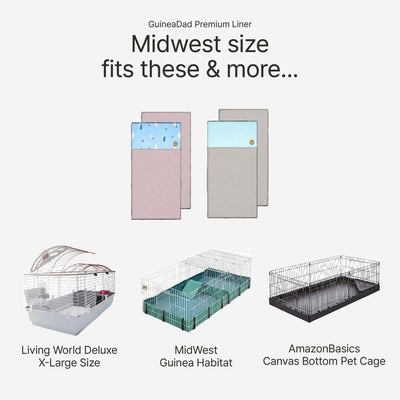
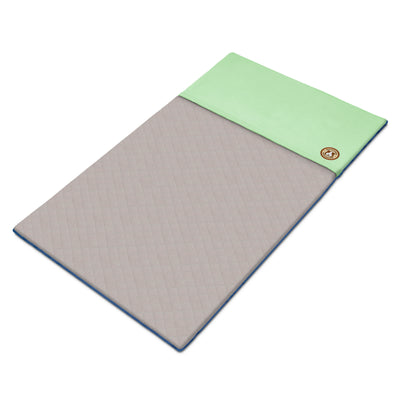
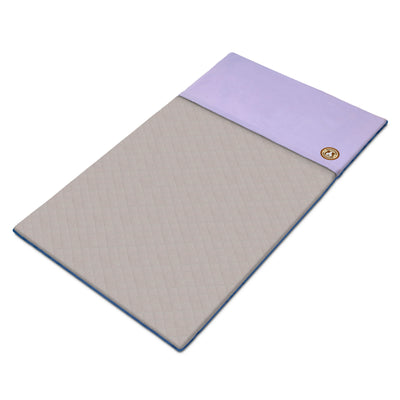
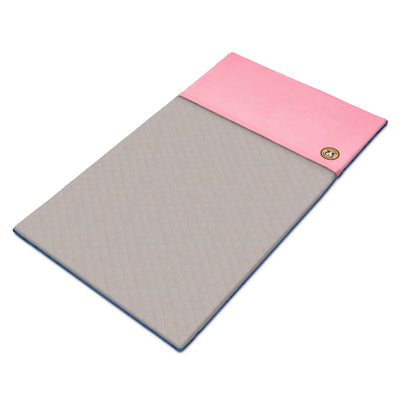
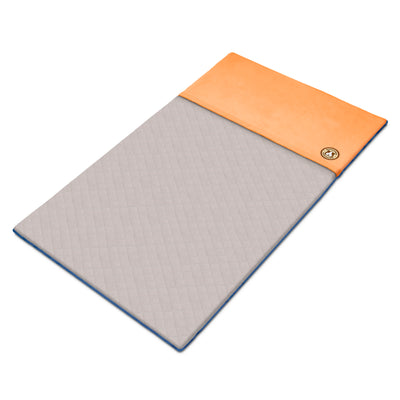
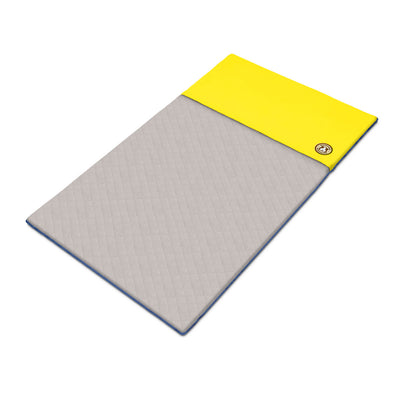
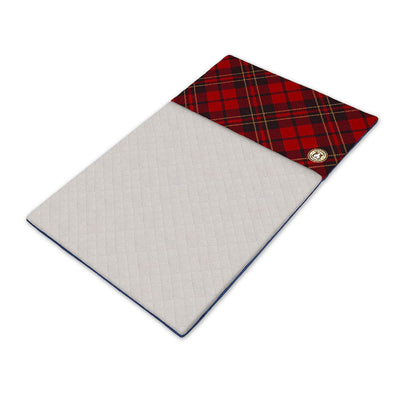
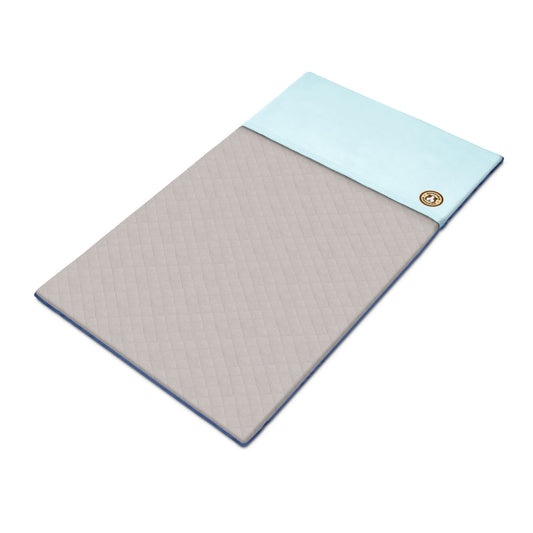







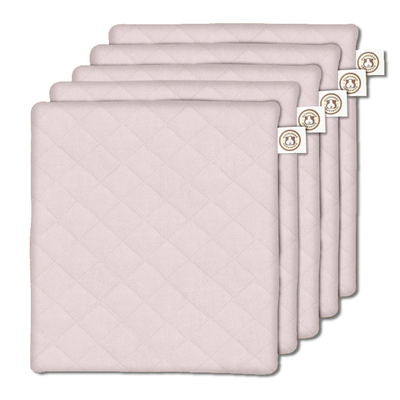
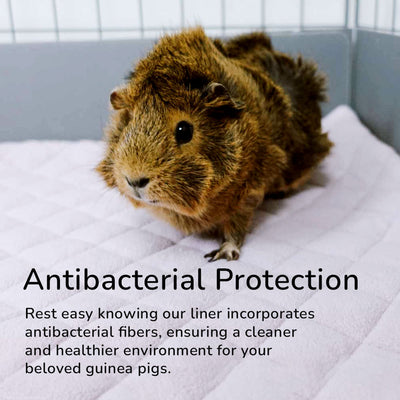
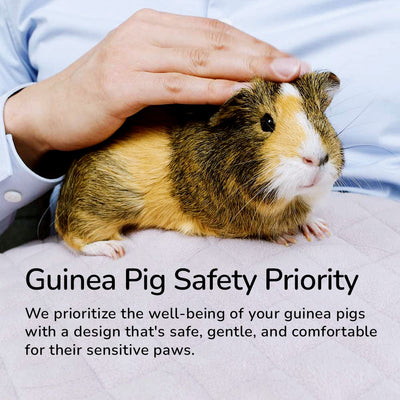
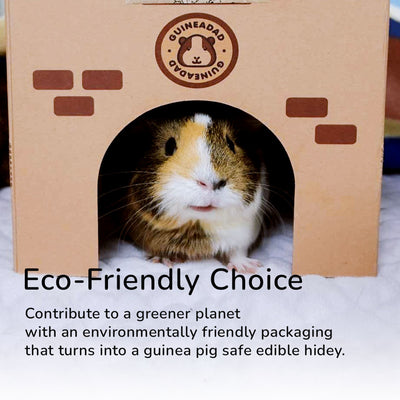
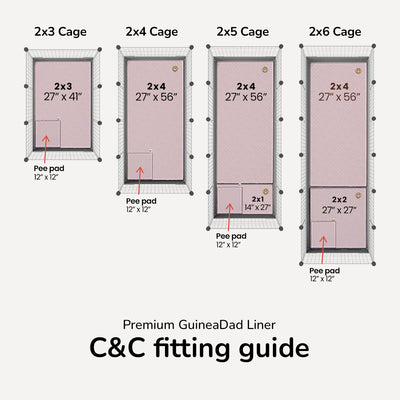
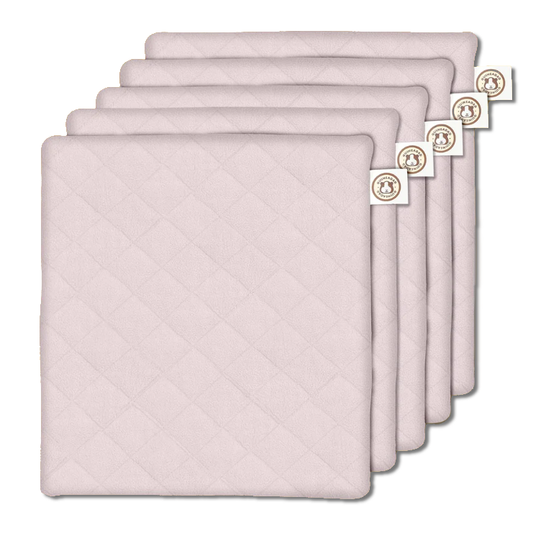
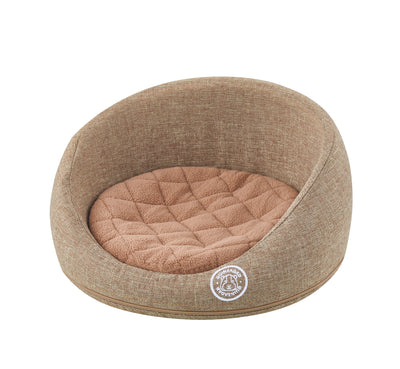
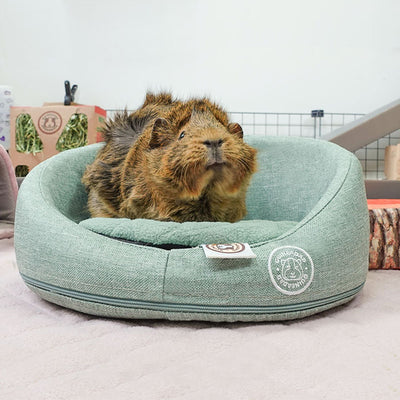
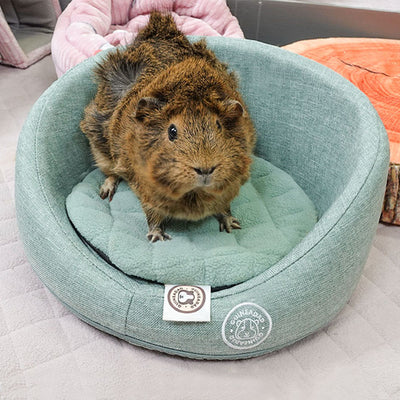
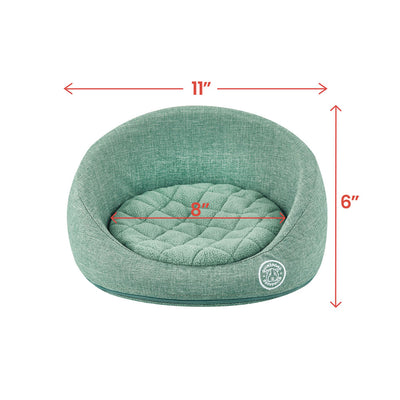
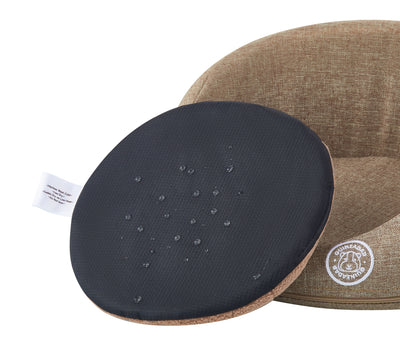
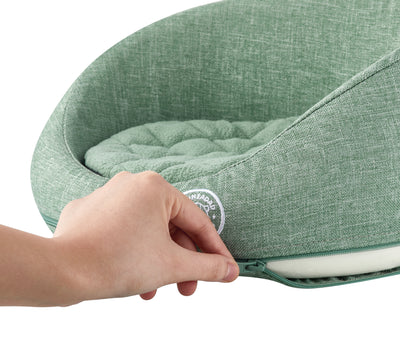
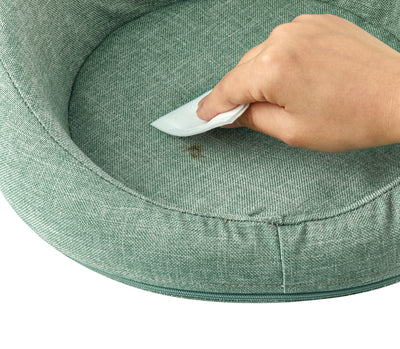
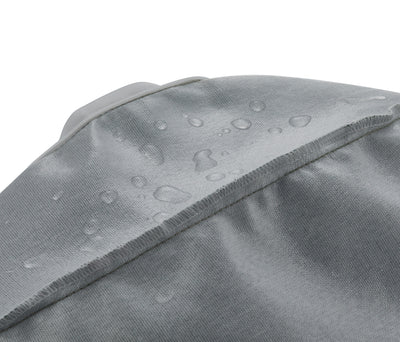
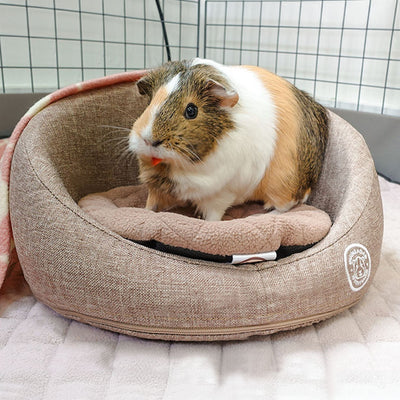
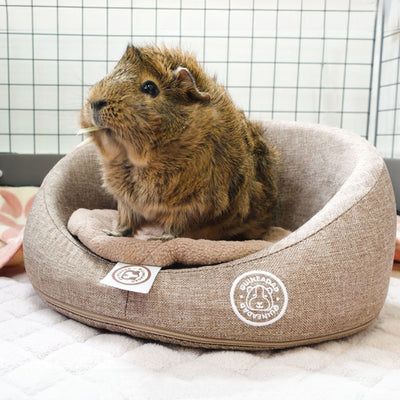
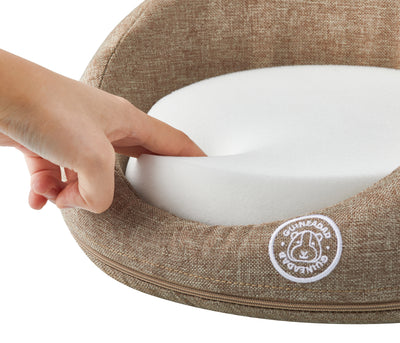
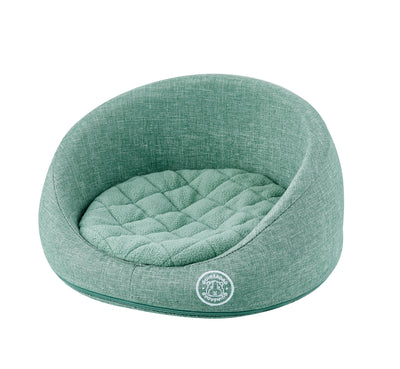
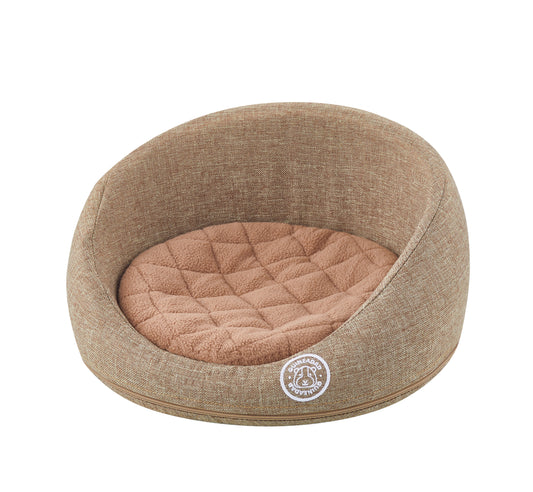


11 comments
Mary That's odd. Our GuineaDad Liners are very absorbent and should not be damp at all. Can you send us a picture at contactguineadad.com? Would love to continue to help you through email. Thank you!
@Mai Is your guinea pig chewing on the fleece pads? That is not normal behavior from a guinea pig, usually they chew on things when they are stressed. I don’t think they should consume the liner, as it is a bedding and not food.
The Guinea dad liner I tried today in my piggy’s cage was very damp by the afternoon.
I thought it was supposed to stay dry. Sitting on damp wet liner can’t be healthy at all for my Guinea pig. Need answers here or sending it all back!!
I am curious, I have looked about the fleece pads but nowhere can I find anything about them chewing on the pads or not since they are cheers and if so how safe is it for them?
@Rhiannon Not sure piggies generally enjoy bathing, but you can always give them abundant veggie as reward. One more tip that could work for some piggies is if you try to play some songs that your piggies like. My girls hate strong beats. My girls like classical and some calm songs with very soft or no beats. I am sure you’ve heard many times, but try not to bathe them too often though! Only when it is necessary :)